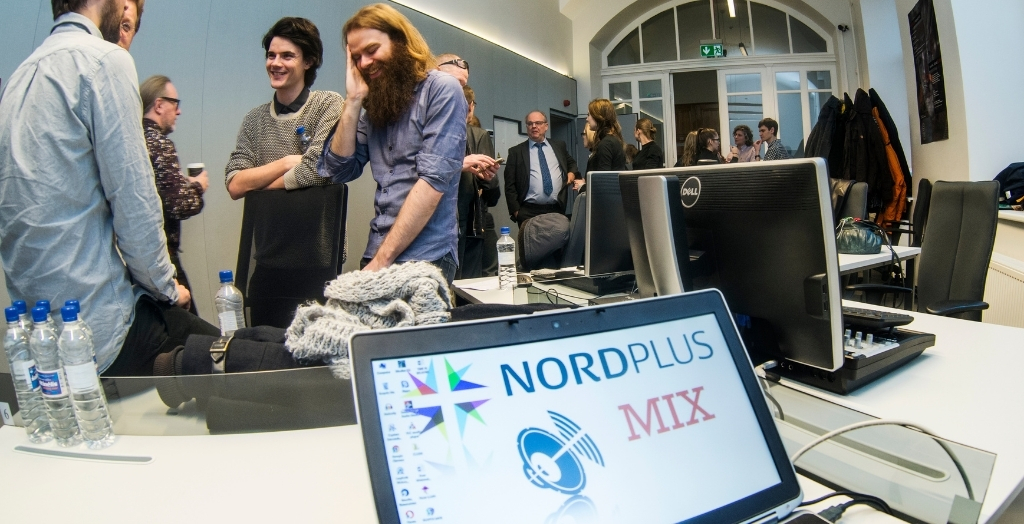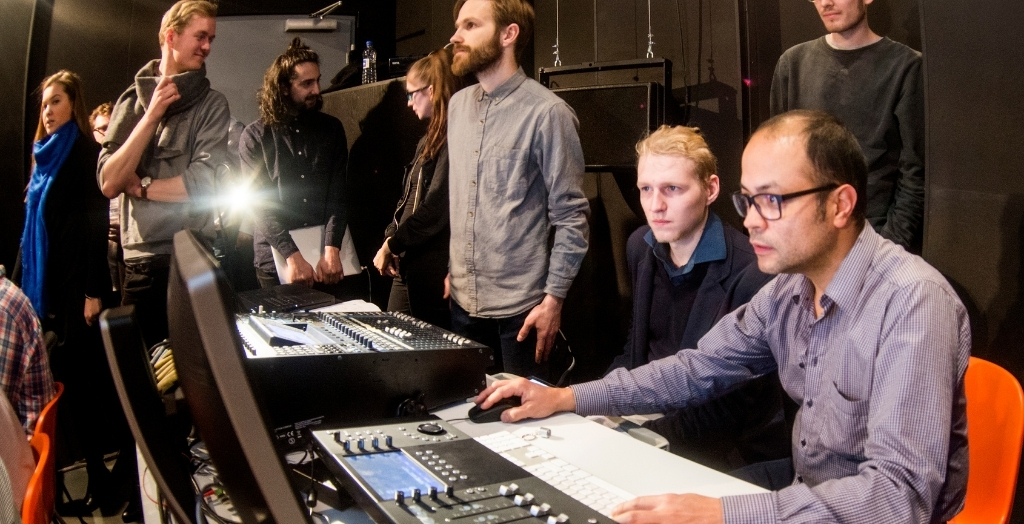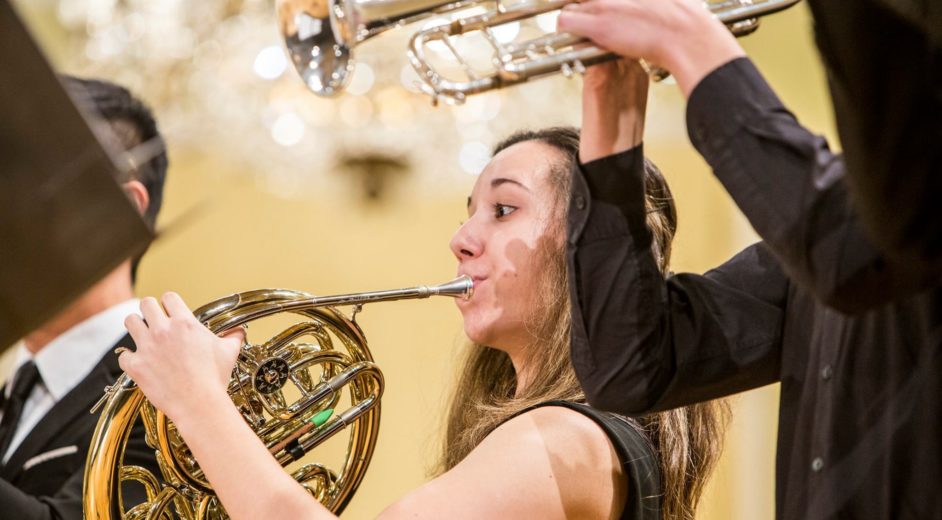A Gigantic Music Network Binds the Baltic and Nordic Regions Together
The Sibelius Network makes smaller conservatoires bigger and creates new dynamics and innovation in the most traditional conservatoires in the Nordic and Baltic countries. A network for everyone – with 25 years of common history.
By: Joan Rask, journalist
“It gives us a bigger voice and a longer reach, and I think it is important to stick together,” says Hanneleen Pihlak.
She is the main coordinator for the Sibelius Network. A quite unique network since it consists of almost all conservatoires in the Nordic and Baltic countries.
“The Nordic countries and the Baltic countries are rather small, but this cooperation makes smaller countries seem bigger,” she says
She is herself from The Estonian Academy of Music and Theatre, which has about 700 students, in Estonia’s capital, Tallinn. She is the international coordinator here and, practically, that means she handles international exchange agreements for students and teachers. One of the main activities in this work is the Sibelius Network, which consists of about 30 conservatoires. Her job is to support the institutions and the teachers with ideas for projects, exchange and, not least, to contribute to the overall progress of the network and the possibility of future projects.
“Music is part of the Nordic and Baltic identity. Musicians are used to working together, and they need a sustainable platform where they can develop new projects and make them a reality,” Hanneleen Pihlak says.
No hindering borders
High towards north – north of the Arctic border – classical music is played too. Michael Strobelt is a teacher at the Arctic University of Norway, which is in the town of Tromsø. He is the university’s coordinator of the Sibelius Network, and he himself has been part of the network for many years.
“The network gives us a much larger academic field. We are so far away from everyone else that anything, which can be shared digitally and be part of the long-distance cooperation, is interesting and important to us,” says Michael Strobelt.

To Michael Strobelt and colleagues, it means that the guest teachers participate in the actual teaching either in corporation with the local teachers or as workshops – and, if necessary, take charge of the teaching for multiple weeks, when Michael Strobelt and colleagues are on training leave, holidays or preoccupied with other projects. Michael Strobelt sees many advantages of the exchange of teachers.
“When we, for example, have a Finnish singing teacher visiting, he will of course teach about the great Finnish composers and the particular Finnish repertoire. That way we get a holistic picture of both the artistic and the linguistic part,” says the Norwegian teacher.
Personally, he is very happy with the cooperation in the network – both regarding the actual teaching with instruments and the theoretical teaching. Among the benefits, he highlights the valuable academic discussions and the new perspectives.
“It was really inspiring to cooperate with the Danish conservatoires. Their teaching is somewhat different concerning music theory and ear training to the way we do it, and they are pretty advanced regarding digital music as well,” says Michael Strobelt.
Long-distance orchestra wanted
Four arctic conservatoires has participated in a project, where the musicians played together across the distances. Unfortunately the goal of playing together in real time was not reached, because they never got rid of the microscopic delay often present in the sound. The project was nevertheless valuable.
“The digital concerts were an experiment, which we were happy with, but no one becomes a musician without physically playing music with others!” says Michael Strobelt.

And the thing about meeting up – that is not so cheap, because nobody flies straight from the top of Norway to the top of Finland – everyone has to round both Helsinki and Oslo because there is no direct flight. Perhaps that is why the northern Norwegian university is especially excited about the Sibelius Network.
“In the Arctic, we have many of the same challenges – we are pretty isolated from the outside world. For many years we, for example, only had a single student playing the tuba, and he had to be part of everything. To him it meant a lot to get in touch with other students playing the same instrument,” says the Norwegian teacher.
Hanneleen Pihlak completely agrees. She sees the same challenges with smaller conservatoires, and, in day to day life, she senses how they utilise the expertise from the network.
“The schools which are active now risk a decrease in activity if no one funds their research – with application processes and funds for example,” she says.
With time the network has become a joint Nordic/Baltic project, where also institutions from the Baltic countries play an active part.
“It is possible because we share common values. In Europe, there is a strong hierarchy, and they often prefer to do things the traditional way. The Nordic and Baltic countries try things out and if it does not work – then we know it does not work” she says and shrugs and smiles.
Coordinating institution
- Estonian Academy of Music and Theatre (EE)
Partner institutions
- The Academy of Music and Dramatic Arts Southern Denmark (DK)
- The Royal Academy of Music (DK)
- The Royal Danish Academy of Music (DK-DKDM)
- Lithuanian Academy of Music and Theatre (LT)
- Jazeps Vitols Latvian Academy of Music (LV)
- Iceland Academy of the Arts (IS)
- JAMK University of Applied Sciences (FI-JAMK)
- Helsinki Metropolia University of Applied Sciences (FI)
- Centria University of Applied Sciences (FI)
- Lahti University of Applied Sciences (FI)
- Karelia University of Applied Sciences (FI-Karelia)
- Novia University of Applied Sciences (FI)
- Oulu University of Applied Sciences (FI)
- SAVONIA University of Applied Sciences (FI)
- University of the Arts (FI)
- Turku University of Applied Sciences (FI)
- University of Tartu (EE)
- Norwegian University of Science and Technology (before 2016) (NO-NTNU)
- University of Agder (NO-UiA)
- University of Bergen (NO-UiB)
- The Arctic University of Norway (NO-UiT)
- University of Stavanger (NO-UiS)
- Karlstad University (SE)
- Lund University (SE-LU)
- The Royal College of Music in Stockholm (SE)
- Örebro University (SE)
- Luleå University of Technology (SE)
- The University College of Opera, Stockholm (SE)
- Göteborg University (SE)
- Tampere University of Applied Sciences (FI)
- Barrat Due Institute of Music (NO)
- Norwegian Academy of Music (NO)
Program
- Nordplus Higher Education
